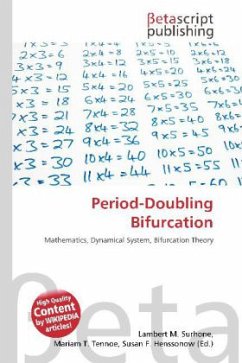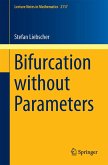High Quality Content by WIKIPEDIA articles! In the mathematical area of bifurcation theory a saddle-node bifurcation or tangential bifurcation is a local bifurcation in which two fixed points (or equilibria) of a dynamical system collide and annihilate each other. The term 'saddle-node bifurcation' is most often used in reference to continuous dynamical systems. In discrete dynamical systems, the same bifurcation is often instead called a fold bifurcation. Another name is blue skies bifurcation in reference to the sudden creation of two fixed points. If the phase space is one-dimensional, one of the equilibrium points is unstable (the saddle), while the other is stable (the node). The normal form of a saddle-node bifurcation is: frac{dx}{dt}=r+x^2 Here x is the state variable and r is the bifurcation parameter.
Bitte wählen Sie Ihr Anliegen aus.
Rechnungen
Retourenschein anfordern
Bestellstatus
Storno








